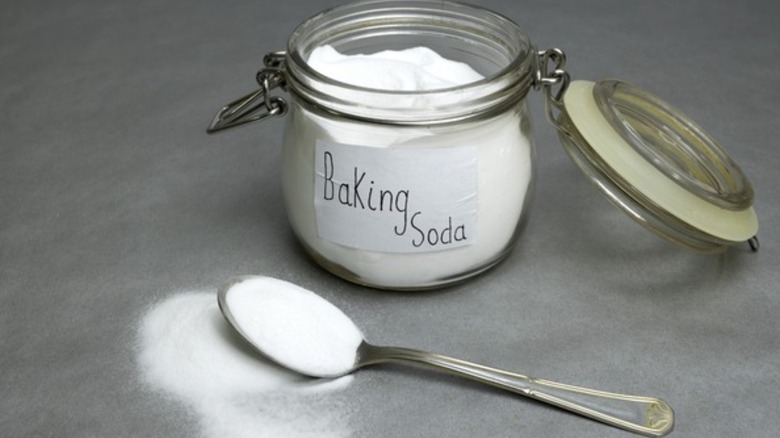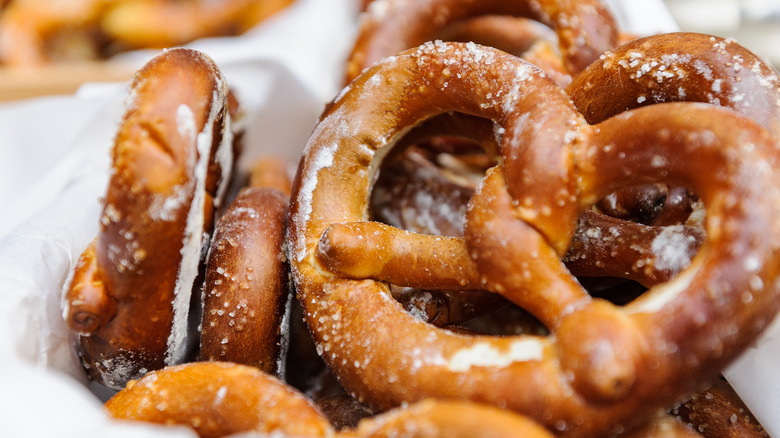What We Really Used Before Baking Powder
Baking powder is a vital ingredient of cakes, cookies, and other pastries, so it's hard to imagine that it wasn't always a kitchen staple. Per Smithsonian Magazine, baking powder wasn't even invented until 1856 by chemist Eben Norton Horsford. Baking soda came first, but it wasn't the best solution for making dough rise because it still needed an acidic additive. Horsford's invention began with extracting monocalcium phosphate from animal bones and adding it to baking soda to create carbon dioxide bubbles. After that, he decided to put both ingredients in the same bottle for simple pickup at the pharmacy. Monocalcium phosphate was later mined rather than extracted to reduce costs.
According to Baker Pedia, baking powder is a chemical leavening agent that consists of sodium bicarbonate, cornstarch, and an acid. When added to doughs, it creates gases that are responsible for flavor, color, texture, and of course, expansion. Baking powder activates as soon as water is introduced. Before all of this, Americans had to find other ways to make dough rise.
It lies in the lye
In the 18th century, bakers would beat air into their eggs to make dough rise, per Smithsonian Magazine. This method was obviously labor-intensive, so they began to implement pearlash into their recipes as well. Pearlash contains lye and wood ashes; according to Four Pounds Flour, lye can be used as a chemical leavening agent or to make gun powder and soap. Because pearlash contained potassium carbonate, it gave dough the desired effect, but it was smelly and difficult to produce. If you dig even deeper into history, you'll find that bakers would simply use yeast to rise dough. Yeast, although still used today in bread, was also added in with cake batter along with wine or beer.
To this day, lye is still used to produce many foods. Per King Arthur Baking Company, it's commonly used in olives, fish, hominy, and pretzels. It's important to be safe when cooking with lye, as it can be irritating to the skin and corrosive. Of course, you don't necessarily need lye to create homemade soft pretzels. We have a soft pretzel bite recipe that you could also give a try.

